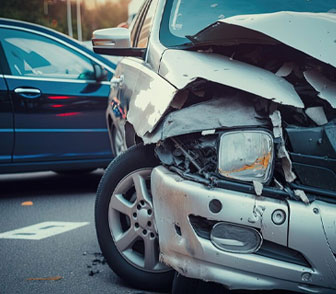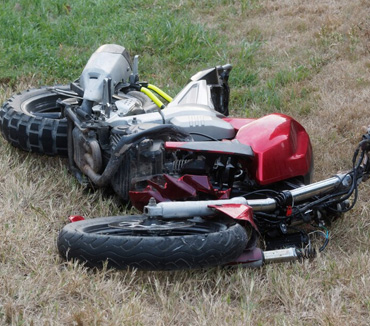Tesla’s Autopilot and Full Self-Driving Car Program
Hollywood promised self-driving cars by now, right? Elon Musk has even teased it!
Now it looks like the wait is coming to an end. But are we ready for it? Well, like it or not, the beta for Full Self-Driving is now open to Tesla owners who meet some important requirements. The features are cutting edge and cool, but as of now, the “Full Self-Driving” designation seems to be a bit of a misnomer, which is one of the main issues the National Transportation Safety Board (NTSB) has with the feature.
The Full Self-Driving Capability includes features that can assist the driver with parking, changing lanes on the highway and even coming to a complete halt at traffic lights and stop signs. The California Department of Motor Vehicles has put Tesla “under review” for public statements that may violate state regulations that prohibit automakers from advertising vehicles for sale or lease as autonomous unless the vehicle meets the statutory and regulatory definition of an autonomous vehicle and the company holds a deployment permit.
In May 2021, the National Highway Traffic Safety Administration (NHTSA) initiated special crash investigations into crashes involving Tesla vehicles with advanced driver assistance systems, including Autopilot and Full Self-Driving Capability. Federal safety regulators are investigating at least 11 accidents involving Tesla cars using Autopilot or other self-driving features that crashed into emergency vehicles when coming upon the scene of an earlier crash.
The NHTSA said seven of these accidents resulted 17 injuries and one death.
What Tesla Says About Its Autopilot and Full Self-Driving Capability
“Autopilot is an advanced driver assistance system that enhances safety and convenience behind the wheel. When used properly, Autopilot reduces your overall workload as a driver. Each new Tesla vehicle is equipped with 8 external cameras, 12 ultrasonic sensors and a powerful onboard computer provide an additional layer of safety to guide you on your journey. Model 3 and Model Y built for the North American market have transitioned to camera-based Tesla Vision, which are not equipped with radar and instead rely on Tesla’s advanced suite of cameras and neural net processing to deliver Autopilot and related features. Model S and Model X continue to be equipped with radar.
Autopilot comes standard on every new Tesla. For owners who took delivery of their cars without Autopilot, there are two packages available for purchase, depending on when your car was built: Autopilot and Full Self-Driving Capability.
Autopilot and Full Self-Driving Capability are intended for use with a fully attentive driver, who has their hands on the wheel and is prepared to take over at any moment. While these features are designed to become more capable over time, the currently enabled features do not make the vehicle autonomous.” (Source: https://www.tesla.com/autopilot)
Tesla Under Investigation
The safety of Tesla’s Autopilot feature has been questioned before. The NTSB, a separate agency that also investigates plane crashes and other fatal accidents, found Autopilot partly to blame in a 2018 fatal crash in Florida that killed a Tesla driver.
One of those safety risks may be the name of Tesla’s software: “Full Self Driving.” In its current form, the software can take over from drivers to park, stay in a lane, cruise on highways and stop at red lights, but this ability does not make vehicles “self-driving.”
By industry standards, Tesla’s system is considered an advanced driver assistance system, or ADAS, and not autonomous driving technology. There is hope that ADAS systems will increase road safety overall but the real problem is that many more Tesla owners assume their cars can drive themselves. Drivers of other cars with automatic braking and other safety features tend to rely less on the feature, instead using it as a backup to their own driving.
We have no doubt that at this phase of the beta testing, the features will work as intended most of the time. But a computerized system can easily be confused by things that humans would have no problem with. Machine visions are not as adaptive as humans. And the problem is that all machine systems sometimes make silly errors. Visual cues that a driver might see when approaching an accident or construction zone, things such as road flares or flashing lights, make more sense to a human than they might to an auto drive system.
Tesla Safety Score: How is it Calculated?
The car will measure a driver’s performance from the moment a user switches on the car and can drive when it is switched off. It will exclude trips during service mode and trips that are less than 0.1 miles.
Tesla’s Safety Score Assesses 5 Key Factors:
- Forward Collision Warnings Per 1,000 Miles: Measures how many times the in-car collision warning is triggered every 1,000 miles.
- Hard Braking: Measures if the car’s speed drops more than 6.7 mph in one second.
- Aggressive Turning: Measures when the car’s speed increased to the left or right more than 8.9 mph in one second.
- Unsafe Following: Measures the car’s speed in front and the distance between the two vehicles.
- Forced Autopilot Disengagement: This is a warning the driver receives when the semi-autonomous Autopilot mode is enabled and the driver has removed their hands from the steering wheel. If the car warns the driver three times during a trip, Autopilot is disabled for the rest of the trip.
Who Can Participate in the “Full Self-Driving” Program?
Tesla claims every new vehicle it builds includes all the hardware necessary to be fully autonomous, and the company says that through future over-the-air software updates, its cars should eventually be capable of driving themselves, with a driver present and attentive at all times, of course. At least for now.
While the beta testing is open to all Tesla owners, Tesla’s CEO Elon Musk shared recently that Tesla owners cannot simply join the beta, but will first have to request access via the newly added button on your car’s dashboard, and then agree to let Tesla monitor your driving behavior. The company began a monthly subscription package for FSD in July with a price of $199 per month. Before that point, the FSD package was sold for a one-time payment of $10,000.
Tesla will determine a driver’s “safety score” before allowing them access to the new software. The score is calculated using data collected by sensors on the driver’s Tesla, and examines instances of forward collision warnings per 1,000 miles, hard braking, aggressive turning, unsafe following, and forced Autopilot disengagement.
Although it has not been revealed what Tesla would consider an acceptable safety score to use the FSD, it does explain that most drivers will have a score of at least 80 out of 100. While a driver’s safety score is required, it has also been required that Tesla drivers must remain in control of the vehicle at all times.
Tesla’s Self-Driving Capabilities
Autopark
Autopark helps automatically parallel or perpendicular park your car, with a single. This feature works by having a “P” pop up on the center display screen indicating that the system has found an appropriate spot while the driver makes their way through a parking lot. By tapping the “P” on the touch screen, the system will automatically handle the entire parking process, including steering and braking.
Auto Lane Change
While not unique to Tesla vehicles, this feature assists in moving to an adjacent lane on the highway when Autosteer is engaged. If the driver engages the turn-signal to change lanes when Autopilot is activated, the car will perform the lane-change maneuver without any steering input needed from the driver.
Summon
This feature is designed to allow the car to drive a short distance forward or backward without a driver behind the wheel. Summon basically moves your car in and out of a tight space using the mobile app or key. When using the Tesla app on a smartphone, you can direct the car slowly forward or backward into a spot by pressing the corresponding button on the phone or key fob, and it can even be programmed to open and close your garage door.
Smart Summon
As the name implies, Smart Summon is intended to be a considerably more advanced feature than regular Summon. Tesla says it is designed to allow your car to drive to you or a location of your choosing. With this feature, your car will navigate more complex environments and parking spaces, maneuvering around objects as necessary to come find you in a parking lot.
Navigate on Autopilot
This feature expands the existing Autopilot system, adding the ability for a Tesla that is traveling on the highway to take on- and off-ramps, and make lane changes without driver input when a destination has been programmed into the car’s navigation system.
Traffic Light and Stop Sign Control
This is the most recent feature and it is used in conjunction with adaptive cruise control and lane keeping assistance. Tesla says when Autopilot is engaged, this system identifies stop signs and traffic lights and automatically slows your car to a stop on approach, with your active supervision. This feature will bring the car to a complete stop at any traffic light, regardless of whether the light is red, yellow, or green. The only time the Tesla will drive through a green light without stopping on its own is if there is a lead vehicle in front that it can follow through the light—or if you override the system.
Call a California Personal Injury Attorney if You Are Injured by a Self-Driving Car
While these technologies are beneficial, we still have a long way to go. If you or a loved one has been injured in a car accident with a self-driving car, please contact our Personal Injury Attorneys at 1-877-241-9554 to learn more about your legal options. A free consultation is just a phone call away.
Request A
Free Consultation
Fields Marked With An ” *” Are Required










